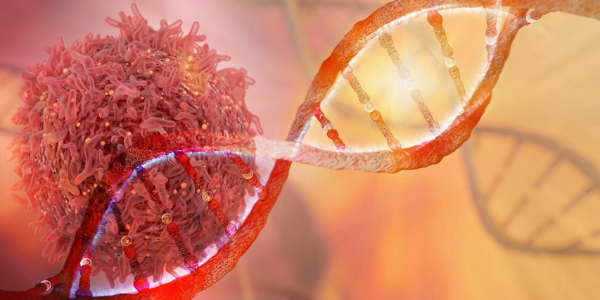Researchers at the National Institutes of Health (NIH) and their collaborators have discovered a new way that RAS-genes, which are often mutated in cancerous tumors, can promote tumor growth beyond their known role in cell surface signaling. Mutated RAS, they found, helps set in motion a series of events involving the transport of specific nuclear proteins that lead to uncontrolled tumor growth, according to a study published in Nature Cancer.
New Ways to Treat RAS-Driven Cancers
RAS genes are the second most frequently mutated genes in cancers, and mutant RAS proteins are the main drivers of some of the deadliest cancers, including nearly all pancreatic cancers, half of all colorectal cancers and one-third of all lung cancers. Decades of research have shown that mutant RAS proteins promote tumor development and growth by activating specific proteins on the cell surface, creating a constant stream of signals that signal cells to grow .“This is the first study to show that mutant RAS genes can promote cancer in a completely new way,” said study author Dr. Douglas Lowy, associate director of the National Cancer Institute (NCI) at NIH. The discovery of the additional role of RAS proteins has exciting implications for improving treatment.”
Drugs that block mutant RAS proteins have only been available as cancer treatments for a few years, and have been approved by the Food and Drug Administration to treat lung cancer and sarcoma. Although their development was a major scientific achievement, RAS inhibitors have had a limited impact on treatment outcomes because they extend most people’s survival by only a few months.
Over 35 years ago, a group led by Dr. Lowy contributed to the first studies to identify RAS as a cancer-causing gene and helped explain how it promotes tumor growth. In this new study, the research team found that mutant RAS is directly involved in releasing a nuclear protein called EZH2 from a complex that is transported from the nucleus to the cytoplasm. Once released, EZH2 facilitates the degradation of a tumor suppressor protein called DLC1. By blocking mutant RAS, the release of EZH2 was halted and the activity of DLC1 was restored.
Innovative Treatment Combinations Possible
In experiments with human lung cancer cell lines and mouse models of lung cancer, the researchers found that combining RAS inhibitors with various targeted cancer drugs that reactivate the tumor suppressor activity of DLC1 had a strong effect against cancer – stronger than that of RAS inhibitors alone. The study also found evidence that mutant RAS proteins exert the same function in other cancers, suggesting that this mechanism may be a general feature of cancers with mutant RAS genes.
The researchers believe that their findings could have potential applications for the treatment of RAS-related cancers. They have begun to study how this function of RAS works in pancreatic cancer in particular, as there are few effective treatments for this cancer. One day, new treatment combinations could be developed that take this new role of RAS into account.
Research Shows that Caterpillar Fungus Can Slow the Growth of Cancer Cells
New research findings into a chemical produced by a caterpillar fungus that has emerged as a promising potential cancer treatment have revealed how it interacts with genes to interrupt the signals for cell growth. It disrupts the cell growth signals that are overactive in cancer, an approach that may be less harmful to healthy tissue than most treatments currently available.
Scientists at the University of Nottingham’s School of Pharmacy have been looking at how a parasitic fungus that grows on caterpillars could be used as a potential treatment for a range of ailments, by studying cordycepin, one of the drugs found in these fungi. The caterpillar fungi are well known in Asia as a healthy food and traditional medicine. Cordycepin, produced by Cordyceps militaris, a pretty orange fungus that attacks caterpillars, has emerged from a series of studies as a promising anti-cancer drug, but until now it was unclear how it works. Using high-throughput methods, the research team measured the effects of cordycepin on the activity of thousands of genes in several cell lines. The study compared the effects of cordycepin with those of other treatments stored in databases and showed that it acts on the cell’s growth-promoting signaling pathways in all cases. By studying cordycepin’s actions in the cell, the team was able to confirm that cordycepin is converted into cordycepin triphosphate, an analogue of the cell’s own energy carrier ATP. Cordycepin triphosphate was found to be the likely cause of the effects on cell growth and thus the molecule that can directly affect cancer cells.
Dr. Cornelia de Moor from the School of Pharmacy led this research and explained: “We have been studying the effects of cordycepin on a range of diseases for several years and with each step we are getting closer to understanding how it could be used as an effective treatment. One of the exciting developments is that it has become easier and less expensive to perform these very large experiments, allowing us to examine thousands of genes at once.”
The researchers’ data confirm that cordycepin is a good starting point for novel cancer drugs and explain its beneficial effects. For example, according to de Moor, derivatives of cordycepin could be designed to produce the triphosphate form of the drug to achieve the same effect. Furthermore, the data will help monitor the effects of cordycepin in patients, as the data points to certain genes whose activity reliably responds to cordycepin, which could be measured in blood cells, for example.






